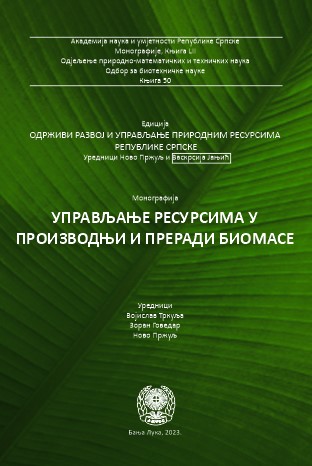Biomass application as a sorbent for adsorption of heavy metals from aqueous solutions
DOI:
https://doi.org/10.7251/EORU2306431LKeywords:
Heavy metals, biosorption, separation, rice husks, peanut husksAbstract
The increase of the population and the industrial development, lead to enormous environmental pollution. Various types of waste containing heavy metals are produced and discharged into water resources. Heavy metals are considered to be the main source of contamination that causes serious environmental problems. The polluted water becomes unusable and threatens the human health and the ecosystem. Toxicity and non-biodegradability of heavy metals, as well as their tendency to accumulate in soils, water resources and living organisms, makes them significant environmental pollutants. Removing heavy metal ions from water resources has been a challenge for a long time. Modern eco-process engineering emphasizes the need for appropriate and sophisticated methods for the natural and wastewater treatment, regardless of the geogenic or anthropogenic origin of the source of pollution. The most commonly used methods for elimination of heavy metals from aqueous solutions are: chemical deposition, membrane processes, electrodialysis and adsorption. Most of these methods are significantly expensive when treating large amounts of water, ineffective at low concentrations of metals, and produce large amounts of other toxic products that require adequate removal and disposal. Among these proposed processes, adsorption is the most commonly used and is considered to be an effective, efficient and economical method for water purification. The sustainable development of separation processes is focused on development of modern, bioseparation techniques for elimination of toxic metals from wastewater using unconventional sorbents with low commercial cost. Bisorption is an environmentally friendly alternative method that has advantages over conventional methods. Large quantities of natural waste materials, such as agro-waste and food industry by-products, can be applied as a potential biosorbents for the removal of heavy metals. In order to increase their adsorption capacity, biosorbents can be physically or chemically modified. Modelling and optimization of the process of biosorption of heavy metals (Mn(II), Fe(II), Ni(II), Cr(VI) and Pb(II)) from water resources through application of natural and modified biosorbents of domestic origin, has been performed in the frame of this work, as an alternative bioseparation technique. From theexamined potential biosorbents, rice husks and peanut husks, as well as their modified forms, showed the best biosorption affinity for the analyzed heavy metals. On the efficiency of removal of heavy metals from aqueous solutions, the influence of the following operating parameters has been investigated: pH value, initial adsorbate concentration and biosorption time. This work contains a detailed literary review, optimal biomass selection, characterization of the used natural and modified biosorbents.Modeling and analysis of the equilibrium, kinetics and dynamics of the investigated systems, was aslo conducted, using sophisticated computing tools and process simulators.
